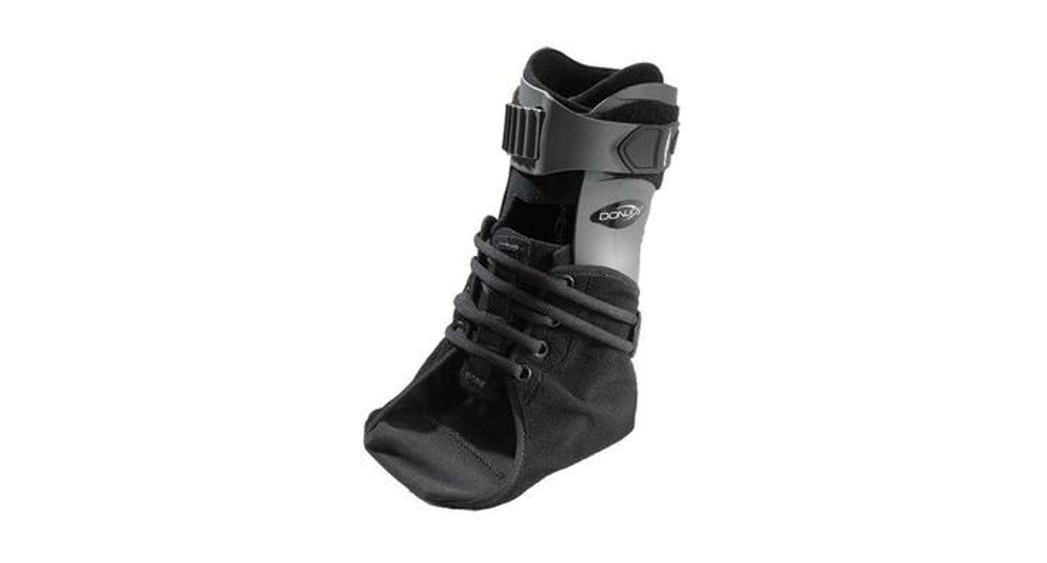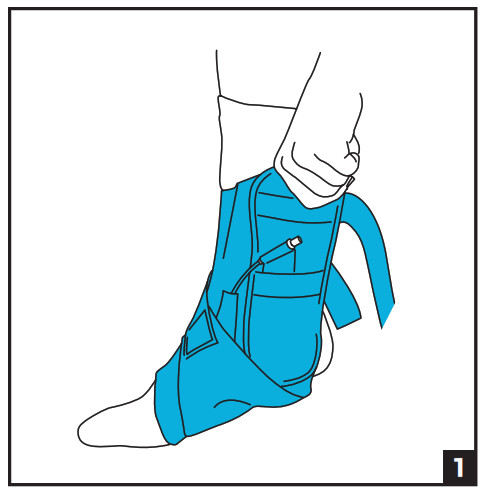
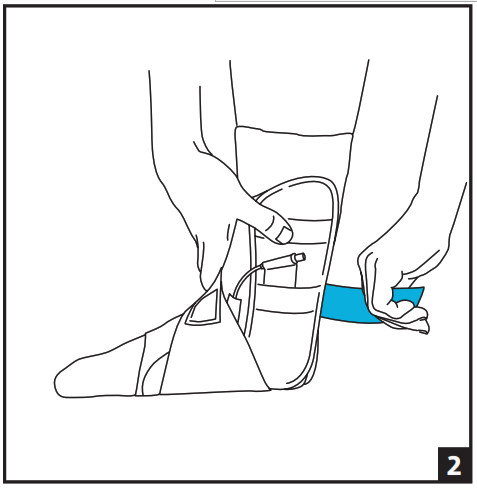
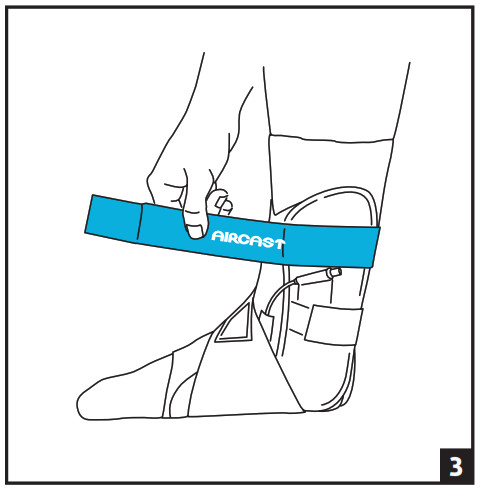
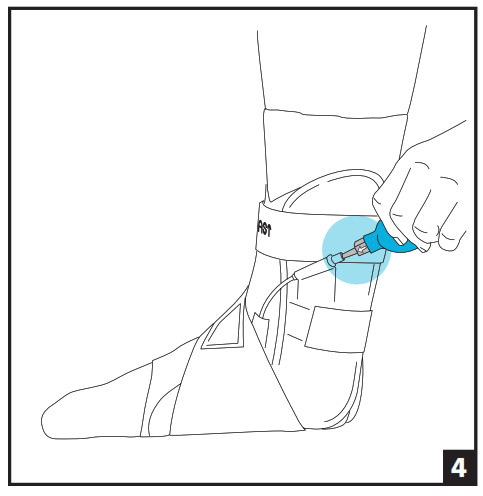
BEFORE USING THE DEVICE, PLEASE READ THE FOLLOWING INSTRUCTIONS COMPLETELY AND CAREFULLY. CORRECT APPLICATION IS VITAL TO THE PROPER FUNCTIONING OF THE DEVICE.
INTENDED USER PROFILE:
The intended user should be a licensed medical professional, the patient, the patient’s caretaker, or a family member providing assistance. The user should be able to read, understand and be physically capable to perform all the directions, warnings and cautions provided in the information for use.
INTENDED USE/INDICATIONS:
The AirLift PTTD Brace is designed to provide support to the arches and stabilize the foot in patients with posterior tibialis tendon dysfunction (PTTD, Stage I, and early Stage II) or for early signs and symptoms of the adult acquired flat foot. Soft-good/semi-rigid designed to restrict motion through elastic or semi-rigid construction.
CONTRAINDICATIONS:
The AirLift PTTD Brace should not be used on patients with inversion sprains or fractures.WARNINGS AND PRECAUTIONS:
- Use only on the ankle.
- If pain, swelling, changes in sensation or other unusual reactions occur while using this product, you should contact your doctor immediately.
- Do not use if shells or straps are damaged.
- Do not use over open wounds.
- Do not use this device if it was damaged and/or package has been opened.
- If you develop an allergic reaction and/or experience itchy, red skin after coming into contact with any part of this device, please stop using it and contact your healthcare professional immediately.
Note: Contact manufacturer and competent authority in case of a serious incident arising due to usage of this device.
APPLICATION INFORMATION:
- Prepare braceUnfasten straps and open brace.
- Apply bracePut on an absorbent sock. Slide foot, toe first, into the back of brace. Pull brace shells upward and align shells with sides of ankle (Fig. 1). Wrap lower strap around back of ankle and secure snugly (Fig. 2). Pull arch support strap until it is snug under the arch. Wrap arch support strap around back of ankle then front of ankle and secure snugly (Fig. 3). Put on lace shoe or sneakers. To adjust fit, tighten or loosen arch support strap.
- Adjust aircell compression The AirLift Aircell is initially deflated. To inflate the aircell, firmly insert the hand bulb tip with white into valve on side of brace (Fig. 4). Squeeze hand bulb until the brace is snug but comfortable. In the case of overinflation, deflate the aircell. To deflate, insert the opposite tip of hand bulb into valve and squeeze bulb.
CAUTIONLike all lower extremity immobilizers, such as casts or braces, patients without sensation (i.e. post-op anesthesia, neuropathies, etc.) should be monitored by a healthcare professional frequently for “hot spots”, skin irritation, wound management, or skin discoloration. Patients with various infections are able to use this device without any problem. Federal law restricts this device to sale by or on the order of a licensed healthcare professional.
CLEANING INSTRUCTIONS:Separate the brace’s removable pads before cleaning. The AirLift PTTD Brace can be hand washed in cold water with mild soap and air dried. DO NOT ALLOW LIQUID TO ENTER VALVE ON BRACE SIDE.
WARRANTY: DJO, LLC will repair or replace all or part of the unit and its accessories for material or workmanship defects for a period of six months from the date of sale. To the extent the terms of this warranty are inconsistent with local regulations, the provisions of such local regulations will apply.
FOR SINGLE PATIENT USE ONLY.
![]() NOT MADE WITH NATURAL RUBBER LATEX.
NOT MADE WITH NATURAL RUBBER LATEX.
NOTICE: WHILE EVERY EFFORT HAS BEEN MADE IN STATE-OF-THE-ART TECHNIQUES TO OBTAIN THE MAXIMUM COMPATIBILITY OF FUNCTION, STRENGTH, DURABILITY AND COMFORT, THERE IS NO GUARANTEE THAT INJURY WILL BE PREVENTED THROUGH THE USE OF THIS PRODUCT.
[xyz-ips snippet=”download-snippet”]

